Nomentano
Bridge (Old Bridge)
Nomentano Bridge,
also known as "Ponte Vecchio" (old bridge), is the symbol
of Montesacro.

Roman
tombs
A couple of hundred meters from Nomentano bridge, just before
reaching Menenio Agrippa square, two Roman mausoleums can be seen.
In Via Maiella public garden, during the construction excavation
for the new neighborhood, between 1913 and 1925, a vast Roman
necropolis was found.



Monte
Sacro
The 37 meters (121
ft) hill delimited by the roads via Falterona, via Monte Serrone,
via Cervino, via di Monte Sacro and via Nomentana has been identified
as the Sacer Mons that was the scene of 493 BC plebs sedition,
mentioned by various authors, including Livy and Cicero (my page
on Roman Montesacro is under construction) . In Roman times on
the Monte Sacro an ancient shrine dedicated to Jupiter Terrificus
rose.
The character of Menenius Agrippa and the fable he told are also
present in 1608 William Shakespeare play Coriolanus.
The hill was visited in 1805 by Simón Bolívar that,
in the place of the riot of common people against the oppression
of the nobles, vowed to liberate his South American homeland from
Spanish colonial oppression (see my page on Simón
Bolívar and Montesacro). Stendhal also visited Monte
Sacro on April 18th 1828, during a jaunt which he
described in his work Promenades dans Rome (1829).
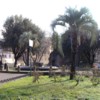

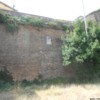
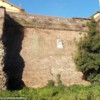


Via Nomentana
The ancient road that
connected Rome to the city of Nomentum (near present-day
Mentana), and formerly named Ficulensis because it ended
in the city of Ficulea, began from the Collina gate of
the city's oldest walls (the so-called "Servian walls"),
together with the Via Salaria, headed for Porto d'Ascoli. With
the construction of the outer city walls, the Aurelian Walls,
the two consular roads had separate gates, the Salaria gate, now
destroyed, which was located in today's Piazza Fiume, and the
Nomentana gate, now walled
up, since it was replaced in 1565 by the new Porta
Pia gate, designed by Michelangelo. In the Middle Ages the
Via Nomentana was also called De Domina, referring to Saint
Constance (318-354), Emperor Constantine's daughter, who had extensive
estates in Sant'Agnese area, where she also built her own mausoleum.
(CARPANETO)
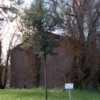


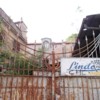

Corso
Sempione city garden
The most central garden of the neighborhood, which witnessed
the children's plays of generations of inhabitants, the settlement
of carousels and, for a few years, even of circuses, was dedicated
on December 16th 2009 to Caius Sicinius Bellutus,
tribune of the people, which led the secession of the plebs on
Monte Sacro. In a flowerbed of the garden, a young
holm oak grows, planted by the municipality of Rome and by
the Association against the mafia Libera
as a tree of memory
and commitment to commemorate the victims of the mafias.
Inside the perimeter, currently fenced, of the garden, the Roman
mausoleum mentioned in one of the preceding paragraphs can be
seen, in addition to a central fountain in travertine, and to
the ghostly former kitchens furniture
factory "Linda", active
until the early seventies of twentieth century.



Bibliography
AMOIA
Alba, BRUSCHINI Enrico (1997) Stendhal's Rome: Then and Now. Edizioni
di Storia e Letteratura, Roma.
CARPANETO Giorgio (1991) Quartiere XVI Monte Sacro. In: I
Rioni e i Quartieri di Roma. Newton Compton Editori, Roma, pag.
1993-2016.

 page
created: June
24th 2015 and last updated:
April
21st 2016
page
created: June
24th 2015 and last updated:
April
21st 2016